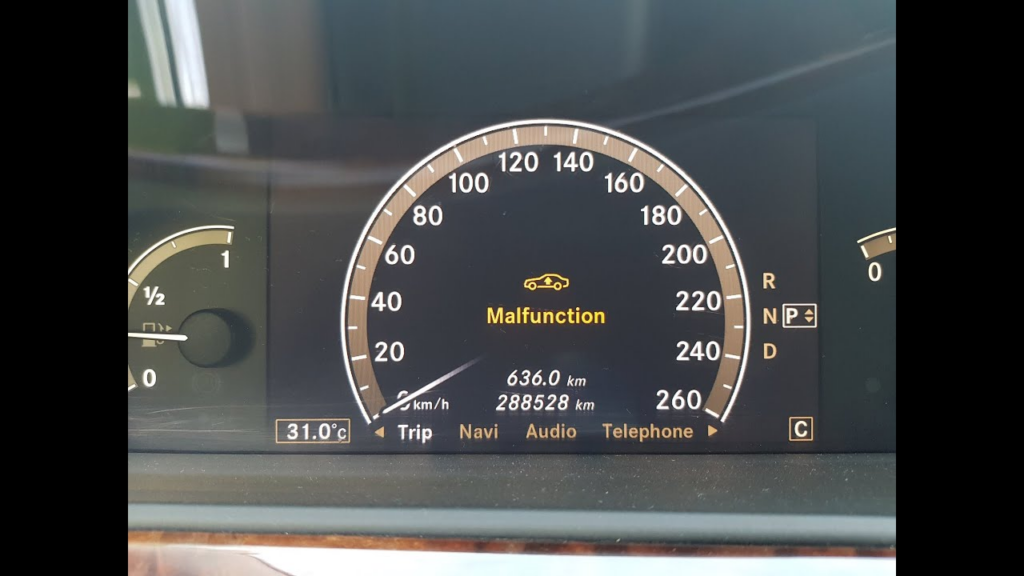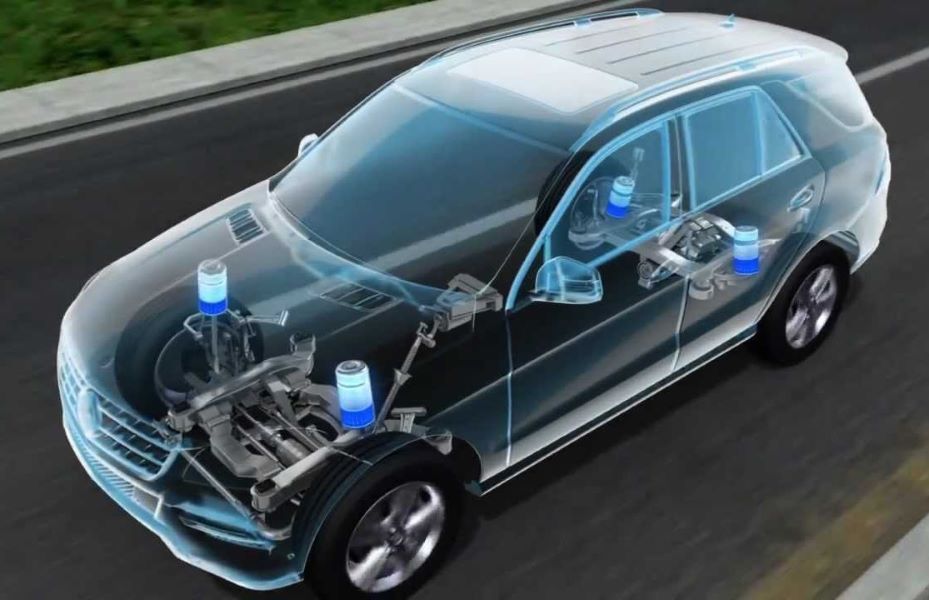Table of Contents
Air Ride Mercedes Not Properly Working: Understanding, Troubleshooting & Testing
Mercedes-Benz vehicles such as the Mercedes GL-Class are admired for their refined comfort and advanced engineering. A key element of that luxury experience is the air ride suspension system (commonly known as AIRMATIC). This system replaces traditional coil springs with air springs and electronically controlled dampers, allowing the vehicle to adapt its ride height and stiffness to different driving conditions.
When the system fails, symptoms like uneven ride height, sagging suspension, bumpy handling, or dashboard warnings can appear. These issues not only affect comfort but can compromise safety and long-term reliability.
In this guide, we’ll explain how the air ride suspension works, highlight the most common problems, walk through a step-by-step testing process, and answer frequently asked questions.
How Air Ride Mercedes Systems Work
Instead of steel springs, the system relies on a combination of air compressors, airbags, valves, sensors, and electronic control units (ECUs).
- – Air compressor: Generates compressed air and maintains system pressure.
- – Air springs (airbags): Support vehicle weight, absorb shocks, and replace traditional springs.
- – Height sensors: Monitor ride height and send data to the ECU.
- – Control module (ECU): Manages system operation and adapts suspension to road conditions.
- – Valves & air lines: Control and distribute air pressure between different wheels.
Together, these components ensure a smooth, stable, and adjustable ride.
Key Components and Common Issues
| Component | Function | Common Issues |
|---|---|---|
| Air compressor | Generates system pressure | Wear, relay failure, electrical fault |
| Air springs/airbags | Support weight, absorb shocks | Leaks, punctures, cracked rubber |
| Height sensors | Measure ride height | Misalignment, damaged wiring |
| Control module (ECU) | Manages system functions | Software glitch, electrical failure |
| Valves | Control airflow | Blockages, stuck open/closed |
| Air lines | Transport compressed air | Cracks, leaks, disconnections |

Symptoms of a Faulty Air Ride Mercedes System
- – Uneven ride height or sagging on one side.
- – Vehicle sits too low after parking overnight.
- – Constantly running air compressor.
- – Dashboard warning: “Air Suspension Malfunction.”
- – Rough, bumpy, or unstable ride.
Repair Process: Troubleshooting & Testing
A structured diagnostic approach is critical for resolving Mercedes air suspension faults.
1. Testing the Air Compressor
- – Inspect power supply and relay.
- – Measure compressor output with a pressure gauge.
- – If output is weak, replacement is required.

2. Inspecting Air Springs
- – Perform a visual check for cracks or sagging.
- – Spray soapy water around the airbag to identify leaks (bubbles = leak).
- – Replace defective air springs in pairs for balanced performance.

3. Checking Height Sensors
- – Verify sensor alignment and mounting brackets.
- – Use a diagnostic tool (Xentry/OBD-II) to compare actual vs. expected readings.
- – Replace faulty sensors or recalibrate if readings are inconsistent.
4. Diagnosing the Control Module (ECU)
- – Scan for fault codes with a diagnostic tool.
- – Apply software updates or reset the module if needed.
- – Replace ECU if it fails to communicate or control the system.

5. Examining Valves
- – Use diagnostics to trigger valve opening/closing.
- – Check for blockages or stuck positions.
- – Replace valve block if airflow is not regulated correctly.

6. Inspecting Air Lines
- – Perform a full visual inspection for cracks, kinks, or loose connections.
- – Conduct a pressure test to confirm airtightness.
- – Replace damaged lines to restore proper pressure flow.
Symptom –> Cause –> Fix Table
| Symptom | Likely Cause | Repair Solution |
|---|---|---|
| Vehicle sagging on one side | Leaking air spring | Replace air spring, recalibrate ride height |
| Suspension won’t rise | Failed compressor / blown fuse | Replace compressor or relay, check wiring |
| Warning light: Air suspension malfunction | Faulty ECU or sensor | Scan for codes, reprogram or replace |
| Constant compressor noise | Air leak in lines or springs | Inspect for leaks, replace faulty parts |
| Rough ride / unstable handling | Damper or valve block failure | Replace damper unit or valve block |
Is Mercedes Air Suspension Adjustable?
Yes. Mercedes vehicles equipped with AIRMATIC or air ride suspension allow drivers to adjust ride height and damping:
- – Comfort mode → softer ride for everyday driving.
- – Sport mode → stiffer damping for sharper handling.
- – Height adjustment → raise suspension for rough terrain or lower it for aerodynamics and fuel efficiency.
Adjustments are made via dashboard or infotainment controls depending on the model.

Can You Drive a Mercedes with Bad Air Suspension?
Technically yes, but not recommended. Risks include:
- – Safety concerns: Reduced stability, longer braking distances, unpredictable handling.
- – Comfort issues: Harsh, bumpy ride; vehicle sagging on one side.
- – Additional damage: Strain on drivetrain, axles, and tires.
- – Dashboard alerts: Constant warning messages indicating faults.
Prompt diagnosis and repair are essential to protect both the vehicle and occupants.

Explore More Mercedes Suspension Issues
For a deeper dive into suspension problems such as uneven ride height, AIRMATIC malfunctions, “Stop Vehicle Too Low” warnings, and vibration faults, visit our hub: Mercedes-Benz Suspension Issues – Symptoms, Causes & Fixes. There you’ll find grouped case studies, step-by-step diagnostics, symptom, cause, fix tables, and preventive tips to keep your Mercedes riding smoothly.
FAQs
Q: How long do Mercedes air suspension parts last?
A: Air springs typically last 6–10 years or 80,000–100,000 miles, depending on usage and environment.
Q: What’s the cost to repair Mercedes air suspension?
A: Air spring replacement can range from $800–$1,500 per corner. Compressors and valve blocks may cost $700–$1,200.
Q: Do I need special tools to diagnose air suspension?
A: Yes, professional tools like Xentry Diagnostics are recommended for accurate fault code reading and calibration.
Q: Can I replace only one air spring?
A: It’s possible but not advised. For balanced performance, replace both sides on the same axle.
Q: How do I prevent air suspension issues?
A: Perform routine inspections, keep the compressor filter clean, and avoid leaving the vehicle parked in low suspension mode for long periods.
Conclusion
A properly functioning Air Ride Mercedes suspension system is vital for delivering the comfort and handling that define the brand. When the system fails, symptoms like sagging, warning lights, or compressor noise should never be ignored.
By following a structured testing and repair process from checking compressors and air springs to diagnosing sensors, valves, and control modules most issues can be accurately identified and resolved. For complex repairs, professional assistance with diagnostic tools ensures the job is done right.
Author
Written by Mercedes Expert
With years of hands-on experience diagnosing and repairing Mercedes-Benz systems, he brings technical depth and practical case studies to help car owners, technicians, and enthusiasts troubleshoot complex automotive issues. His work focuses on clear repair guides, OEM-level procedures, and knowledge-sharing to empower both professionals and drivers.
Last Updated: September 2025






Leave a Reply